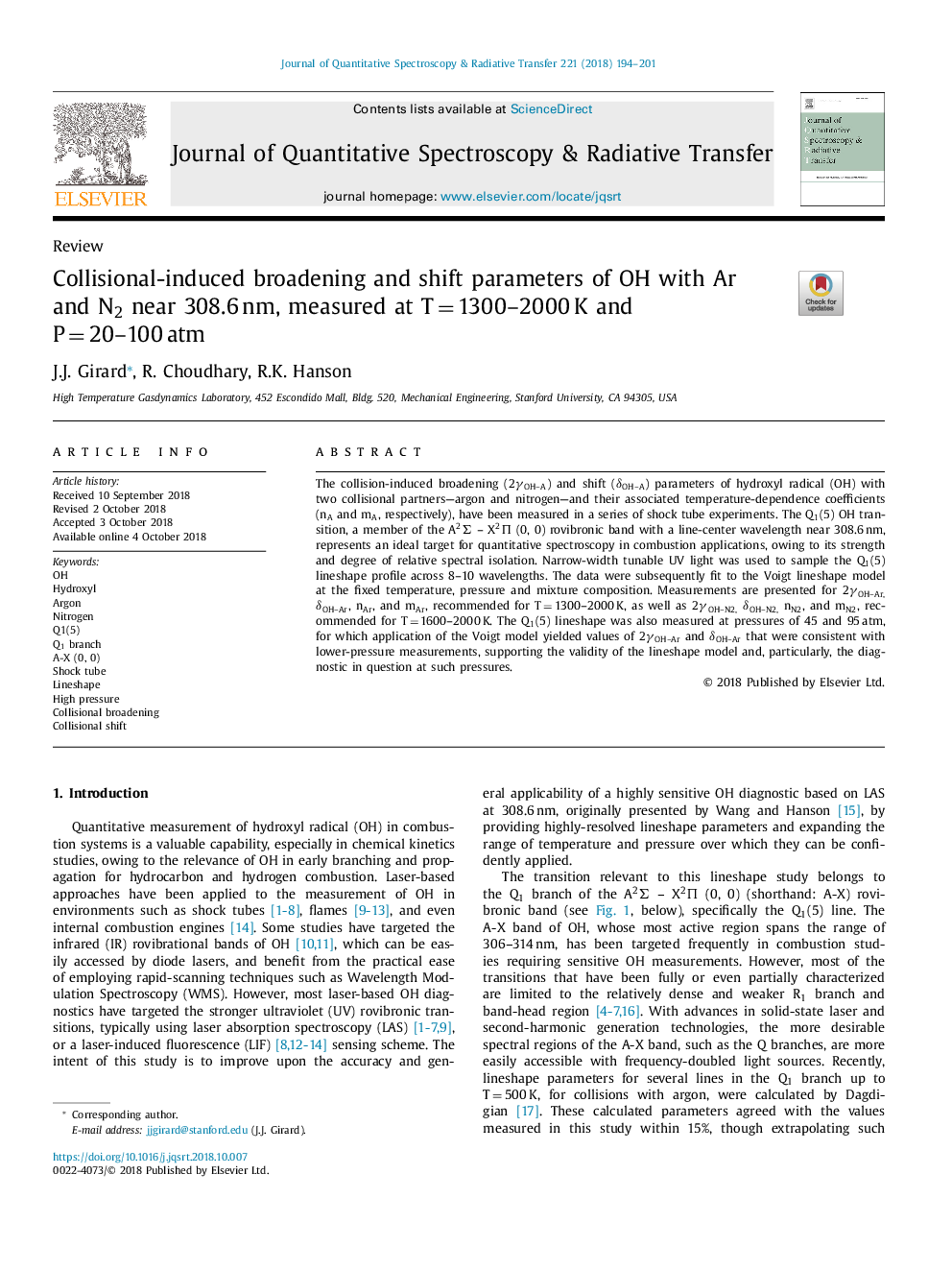| Article ID | Journal | Published Year | Pages | File Type |
|---|---|---|---|---|
| 11263128 | Journal of Quantitative Spectroscopy and Radiative Transfer | 2018 | 8 Pages |
Abstract
The collision-induced broadening (2γOHA) and shift (δOHA) parameters of hydroxyl radical (OH) with two collisional partners-argon and nitrogen-and their associated temperature-dependence coefficients (nA and mA, respectively), have been measured in a series of shock tube experiments. The Q1(5) OH transition, a member of the A2Σ - X2Î (0, 0) rovibronic band with a line-center wavelength near 308.6â¯nm, represents an ideal target for quantitative spectroscopy in combustion applications, owing to its strength and degree of relative spectral isolation. Narrow-width tunable UV light was used to sample the Q1(5) lineshape profile across 8-10 wavelengths. The data were subsequently fit to the Voigt lineshape model at the fixed temperature, pressure and mixture composition. Measurements are presented for 2γOHAr, δOHAr, nAr, and mAr, recommended for Tâ¯=â¯1300-2000â¯K, as well as 2γOHN2, δOHN2, nN2, and mN2, recommended for Tâ¯=â¯1600-2000â¯K. The Q1(5) lineshape was also measured at pressures of 45 and 95â¯atm, for which application of the Voigt model yielded values of 2γOHAr and δOHAr that were consistent with lower-pressure measurements, supporting the validity of the lineshape model and, particularly, the diagnostic in question at such pressures.
Related Topics
Physical Sciences and Engineering
Chemistry
Spectroscopy
Authors
J.J. Girard, R. Choudhary, R.K. Hanson,
